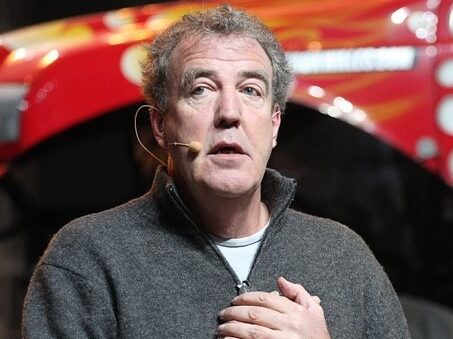After a dull race in Suzuka, Clarkson says F1 must stop using circuits with little overtaking potential.
Jeremy Clarkson has waded into Formula 1’s latest controversy with his trademark bluntness, following a Japanese Grand Prix that many fans described as a 53-lap procession. The former Top Gear host called on the sport to abandon circuits where overtaking is nearly impossible—Suzuka included.
The grand prix, won by Max Verstappen from pole, saw just 15 overtakes, with 11 of the 20 drivers finishing exactly where they started. Ferrari’s Lewis Hamilton was the only top-10 driver to make up a position. The lack of movement led to growing concern that the 2025 season could become what some are already calling a “qualifying world championship.”
Embed from Getty ImagesPosting to X (formerly Twitter), Clarkson didn’t hold back:
“I’ve had an idea to make F1 racing more consistently exciting. Don’t use tracks where overtaking is difficult,” he wrote.
“Sure. The cars are bigger so accept that, ignore the ‘incentives’, and use tracks that are suitable. Ultimately, the revenue comes from fans. Always.
That F1 race this morning gave me an idea of what it might be like to watch cricket.”
Clarkson’s frustration echoes the sentiment of thousands of fans who were left deflated by what many felt was a strategically stale and action-light race. Despite Verstappen being pushed all the way by McLaren duo Lando Norris and Oscar Piastri, there was little genuine wheel-to-wheel racing.
Drivers themselves were similarly unimpressed.
“It was flat-out from start to finish but the pace was too similar to do anything,” Norris admitted. “Max drove a good race with no mistakes, and it ultimately came down to qualifying positions.”
Brazilian rookie Gabriel Bortoleto also shared his frustration:
“It was not so difficult, just a bit boring to stay behind the car in front. Even if you have more pace, which was my case towards the end, it wasn’t enough to overtake. I tried twice but couldn’t even get side by side.”
But not all drivers were singing the same tune. Ever the contrarian, Fernando Alonso shrugged off the negativity.
“When we don’t have grip we complain, when we have too many stops we complain the tyres don’t last. Instead of seeing the negative, I try to enjoy the weekend—it was another great Suzuka.”
Still, Clarkson’s comments struck a chord. Many pundits and former drivers agree that F1’s current car design—bulky and aerodynamically sensitive—makes tight circuits like Suzuka or Monaco extremely processional unless strategy or weather throws a curveball.
His solution may be simple, but it challenges the commercial and historical foundations of F1. Iconic tracks like Suzuka, Spa, and Monaco come with tradition, lucrative deals, and massive fan bases. Yet their suitability for modern F1 cars is increasingly being questioned.
As the championship heads next to Shanghai, which will host a sprint and full race, the pressure is now on to deliver more action. If the trend continues, fans may continue to switch off—and Clarkson, never shy to speak for the everyman viewer, will likely be the first to remind them why.
`
